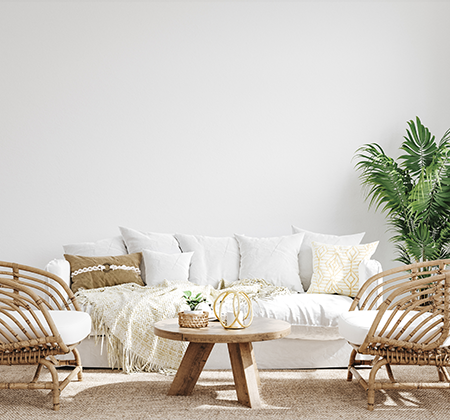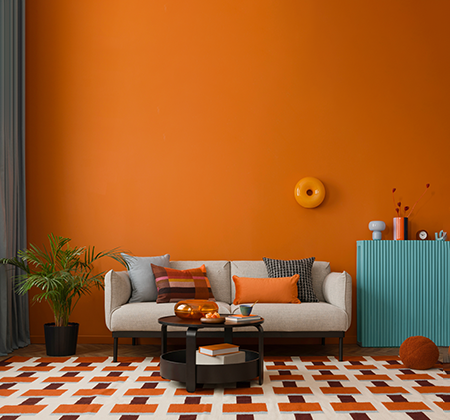Once upon a time, interior design rules stated that everything had to match. Same timber, same finish, same tone.
Well, those days are long gone.
In today’s home, contrast and character is celebrated, which means that you can mix different timber tones. Oak with walnut, whitewash with black wood, as long as you balance them thoughtfully.
Here is how you can create a cohesive, layered look that will feel intentional and not accidental.
Start with a Dominant Tone
Every room needs that main character. One timber tone that sets the scene.
This could be the flooring, dining table, or sofa frame. Once you have your dominant tone is chose, use it as your anchor and layer other timbers around it.
Examples:
- If your floors are mid-tone oak, choose a lighter oak sideboard and a darker walnut coffee table for contract.
- If your anchor piece is a dark walnut, balance it with lighter chairs or rattan textures.
Tip
Try to keep your dominant timber tone appearing in at lease two places in the room to tie it all together.
Match the Undertones, Not the Exact Shade
Mixing timbers together well isn’t about matching the colour. It’s about matching the temperature.
- Warm timbers: honey, caramel, red-toned woods like teak or spotted gum.
- Cool timbers: ash, driftwood, grey oak, and whitewash
Mixing the cool and warm tones can make the space look a little jarring. So it’s best that you choose one temperature family and stay within it.
- If your main timber has a yellow or red undertone, keep your other woods in the same range.
- If it’s grey or neutral, stick to cool-toned companions.
Create Contrast Intentionally
When everything is too matchy-matchy, it can make the room feel flat. But if the tones are too far apart, it can just end up feeling chaotic.
The trick? Controlled contrast.
Choose one or two lighter or darker tones to add depth and interest. Just make sure you have a consistent thread with the undertone or grain style.
Example combos:
- Warm oak floors + Walnut dining table + rattan chairs
- Ash timber console + whitewashed sideboard + matte black metal accents
- Blackwood bed + light oak bedside tables + linen headboard
Use Non-Timber Elements to Bridge the Gap
If two timber tones feel slightly off, soften the transition using neutral materials:
- Rugs, cushions, or throws in beige, cream, or charcoal
- Metal, glass, or stone accents to break up large timber surfaces.
- Upholstery in warm neutrals or textured fabrics.
These bridging elements can act as buffers that help all the wood tones flow naturally.
Repeat and Balance
What makes mixed timbers feel deliberate is balance.
If you have darker tones on one side of the room, repeat it elsewhere. Maybe in a frame, lamp base, or side table.
Use the rule of three
Use each major tone at least three times ins mall touches across the space for cohesion. Even that subtle repetition can tie everything in together effortlessly.
- When in Doubt, Add Texture or Matte Finish
- High-gloss timber can make differences in tone more noticeable.
- Matte or textured finishes, on the other hand, can blend easily and feel more neutral.
Mixing timber tones isn’t about following strict rules. It’s about creating a visual that flows. As long as you stay within a consistent undertone and repeat tones across the room, you can make your space look balanced, inviting, and effortlessly modern.




